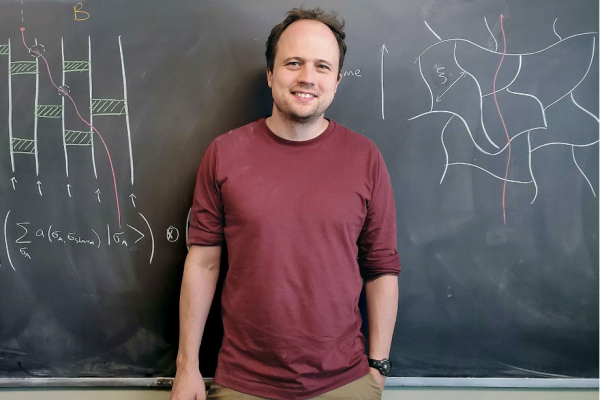Physicists Observe 'Unobservable' Quantum Phase Transition

Author: Charlie Wood, Quantum Magazine
In 1935, Albert Einstein and Erwin Schrödinger, two of the most prominent physicists of the day, got into a dispute over the nature of reality.
Einstein had done the math and knew that the universe must be local, meaning that no event in one location could instantly affect a distant location. But Schrödinger had done his own math, and he knew that at the heart of quantum mechanics lay a strange connection he dubbed “entanglement,” which appeared to strike at Einstein’s commonsense assumption of locality.
When two particles become entangled, which can happen when they collide, their fates become linked. Measure the orientation of one particle, for instance, and you may learn that its entangled partner (if and when it is measured) points in the opposite direction, no matter its location. Thus, a measurement in Beijing could appear to instantly affect an experiment in Brooklyn, apparently violating Einstein’s edict that no influence can travel faster than light.
Einstein disliked the reach of entanglement (which he would later refer to as “spooky”) and criticized the then-nascent theory of quantum mechanics as necessarily incomplete. Schrödinger in turn defended the theory, which he had helped pioneer. But he sympathized with Einstein’s distaste for entanglement. He conceded that the way it seemingly allowed one experimenter to “steer” an otherwise inaccessible experiment was “rather discomforting.”
Physicists have since largely shed that discomfort. They now understand what Einstein, and perhaps Schrödinger himself, had overlooked — that entanglement has no remote influence. It has no power to bring about a specific outcome at a distance; it can distribute only the knowledge of that outcome. Entanglement experiments, such as those that won the 2022 Nobel Prize, have now grown routine.
Over the last few years, a flurry of theoretical and experimental research has uncovered a strange new face of the phenomenon — one that shows itself not in pairs, but in constellations of particles. Entanglement naturally spreads through a group of particles, establishing an intricate web of contingencies. But if you measure the particles frequently enough, destroying entanglement in the process, you can stop the web from forming. In 2018, three groups of theorists showed that these two states — web or no web — are reminiscent of familiar states of matter such as liquid and solid. But instead of marking a transition between different structures of matter, the shift between web and no web indicates a change in the structure of information.
“This is a phase transition in information,” said Brian Skinner of Ohio State University, one of the physicists who first identified the phenomenon. “It’s where the properties in information — how information is shared between things — undergo a very abrupt change.”
Original article, "Physicists Observe 'Unobservable' Quantum Phase Transition" written by Charlie Wood for Quantum Physics Magazine.org
